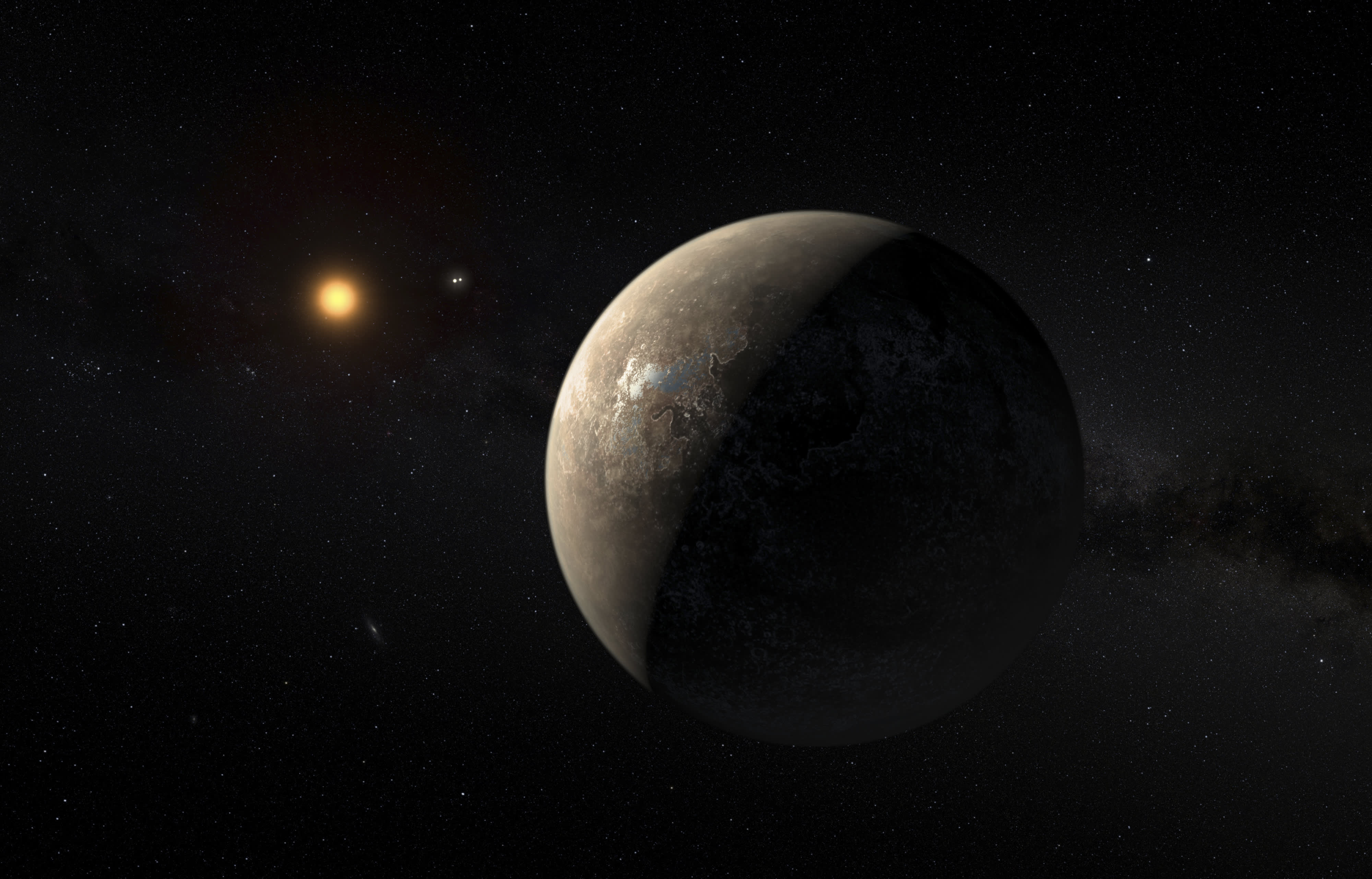
Astronomers have chanced on proof of a 3rd planet across the closest megastar to the solar, reinforcing the concept planets are commonplace across the stars of the galaxy, even a few of its smallest.
And whilst the newly-found planet is not up to part the scale of Earth and most certainly too scorching to be inhabited, there is nonetheless an opportunity there may well be lifestyles round Proxima Centauri, Earth’s nearest galactic neighbor.
“The planet isn’t throughout the megastar’s liveable zone — it is orbiting too shut,” mentioned astronomer João Faria, the lead creator of a find out about revealed this month within the magazine Astronomy & Astrophysics that main points the invention. “So it is not likely that water may also be in a liquid state and that the prerequisites are proper for lifestyles.”
In truth, the brand new planet is so shut — a few 10th of the space between the solar and Mercury — that it takes simply 5 days to finish an orbit round its megastar.
Additionally it is prone to be “tidally locked,” because the moon is to Earth, with one face all the time pointing towards Proxima Centauri. That would reason extremes of temperature and bounds the possibility that the planet has a solid environment, Faria mentioned.
However astronomers are desirous about the invention, in spite of the opposed prerequisites that might exist at the new planet.
Faria, a researcher on the Institute of Astrophysics and House Sciences on the College of Porto in Portugal, mentioned it suggests the Proxima device may well be “full of planets.”
Additionally it is a leap forward in the best way astronomers seek for planets round remote stars, which might quickly result in the invention of much more, he mentioned in an e mail.
The brand new planet must be verified by means of different observations, however Faria and his co-authors say they detected it in tiny permutations in Proxima’s starlight — “wobbles” led to by means of the planet’s gravity.
An identical tactics had been used to hit upon the primary planet chanced on round Proxima in 2016, and a 2nd planet in 2019.
However the newest seek used mild accrued by means of a new spectrograph on the Very Massive Telescope on a mountaintop within the Atacama Desolate tract of northern Chile — a extra delicate tool than used prior to.
“We are actually ready, with regards to instrumental precision, to hit upon such small alerts, which opens the potential for discovering planets just like the Earth round stars just like the solar within the not-so-distant long run,” Faria mentioned.
Proxima Centauri is the 3rd megastar of the Alpha Centauri device, which looks as if a unmarried brilliant megastar from Earth.
It is simply over 4 light-years away, or about 25 trillion miles — however in spite of that massive distance, it is the closest megastar device.
Most effective the sunshine from its two brightest stars, Alpha Centauri A and Alpha Centauri B, may also be noticed with the bare eye.
They orbit each and every different, however a long way sufficient aside that they are concept to not intrude with each and every different’s planets.
And since Alpha Centauri A and B are each remarkably just like the solar, it is imaginable lifestyles can have developed on their planets or moons — so scientists plan to search for them with a devoted house telescope.
Proxima Centauri, however, is a small and really dim purple dwarf megastar found out by means of telescope in 1915, a long way clear of the device’s two primary stars.
Technically, Proxima is the nearest megastar to the solar — a few trillion miles nearer than the others — till its orbit takes it additional away in about 25,000 years (its identify comes from the Latin phrase for “nearest”).
In contrast to Alpha Centauri A and B, the place no verified planets were chanced on, 3 planets have now been detected round Proxima.
None of them are regarded as similar to Earth, alternatively, as a result of Proxima is an energetic “flare megastar” that ceaselessly doses its planets with bursts of intense radiation.
However it is nonetheless imaginable that lifestyles can have developed on a minimum of one in every of its planets, mentioned Guillem Anglada-Escudé, an astronomer on the Institute of House Sciences in Barcelona, Spain.
He led the crew that introduced Proxima’s first planet in 2016. That planet used to be chanced on to be concerning the dimension of Earth and inside of Proxima’s slender liveable or “Goldilocks” zone, the place it is neither too scorching nor too chilly — “good” — for oceans of water on its floor.
Observations now counsel there would possibly in truth be oceans there; and if that is the case, they might fill up atmospheric gases stripped away by means of Proxima’s common flares, he mentioned. Oceans may additionally act as a barrier to the flares, and so it is imaginable that marine lifestyles could have developed.
Anglada-Escudé expects extra planets will likely be chanced on round Proxima Centauri and different stars as astronomical tools and strategies give a boost to.
“Inside a decade, we will have to be capable to hit upon those planets at once,” he mentioned. “The speculation will likely be to seek for lifestyles, to look from the spectrum of a planet if there are chemical compounds that can’t be defined by means of different herbal processes.”
